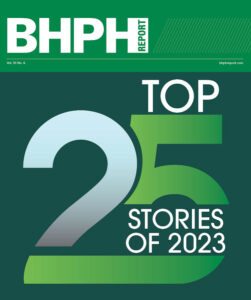Why Making Realistic Projections Benefits Operators

“I think it’s a very relevant topic, especially with how sophisticated and competitive our business is these days,” Carmichael told BHPH Report. “This is something that all dealers need to sit down and project their business at least for the next year. I’m not a big believer on looking three years down the road or five years down the road because business dynamics change way too much, even ours, believe it or not. There’s changes year-over-year, whether it’s cost of cars, underwriting or collection practices or sales processes. Those are little things that can really change a model.
“I always look 12 months into the future and then by looking at least the past three years or five years in the past to look at if this is even achievable for what’s going on in the current market,” he continued.
Beginning Steps to Projections
Carmichael offered some suggestions on how BHPH operators can go about making annual projections, even if they already do so. He insisted that the projections have “to make sense,” and shared how the process unfolds with 20 Groups NCM Associates hosts.
As the groups are organized by dealership size, each participating operator is asked to submit the number of units they’re going to sell each month, the number of accounts they’re going to charge of each month and the number of accounts that are going to pay of each month.
Then these proposed projections go into the dollars operators seek to collect each month and what their monthly expenses are going to be. Carmichael also wants operators to consider what their cash-in deal is going to be on a per-unit basis.
“What we do from a cash-flow standpoint, we don’t have them do any excises from a profitability standpoint because profit is great, but it’s obviously a capital-intensive business,” Carmichael said.
Carmichael recollected the projection he saw from 20 group operators who forecasted what they expected to generate in 2013.
“Then I went back and looked at their past three years’ average on what they had done during each of those months for each of those different thing,” he said. “It was eye-opening to about 70 percent of them that they were projecting a 2013 that was going to be better than any three-year period that they had ever done. Then they had to go back and take a look at it and see what makes sense. If I sell 25 percent more cars, how am I going to do this year with the market the way it’s been in the last three years and not been able to grow the business?”
Carmichael then explained why operators’ projections ended up being so far apart from actual performances.
“It needs to make sense in that it has to be achievable. There’s no reason to set pie in the sky expectations if you can’t get there. I’m not just talking about profitability and cash flow. I recommend that dealers under promise and over deliver when it comes to cash flow,” Carmichael said.
“With the dealers I work with, we try to set up on an ongoing basis working on projecting and budgeting,” he continued. “I have about a dozen who have me come out at least once a year, sometimes twice a year when it’s time to do their projecting and budgeting, and we sit down and hammer out what their business is going to look like for the coming year. What’s the volume going to look like? What’s the profitability? What’s it going to cost to run that business?
“We want to make sure that it makes sense because they’re going to take that to their people and they’re going to expect their people to live up to that expectation so it’s got to make sense,” Carmichael went on to say. “It can be just something that’s way out in left field, saying, ‘Guys we need to sell more cars so next year we’re going to sell 25 percent more cars.’ OK great, how?’”
Projections Key for Capital Increase
Carmichael stressed several times during a conversation with BHPH Report about how much buy-here, pay-here is a capital-intensive business. He pointed out that having accurate projections can be an element to help operators secure more capital to growth.
“It’s probably one of the most important aspects because any lending institution is going to look at profitability,” Carmichael said. “Those lenders that are more connected to our business, Texas Capital, Spartan Financial, a lot of those are going to understand that the financial statement itself, the profits and losses, are not necessarily an indicator of how healthy the business is.”
“But your regional banks, your local banks, that’s the one thing they really take a look at is pure profitability. As far as projections are concerned, we would never recommend someone to make less money. But store that makes less profit doesn’t mean it’s a less valuable business,” he continued.
Carmichael went on to explain how a BHPH operator can use annual projections to educate a lender about the business to make the dealership a better investment prospect.
“The key moving forward is when we’re trying to secure capital from a projection standpoint is to show the bank what that return on investment is going to be,” Carmichael said. “What is my cash flow going to look like on the $1 million you’re going to give me because some banks are going to want a finite note, saying you have seven years to pay back this many million.
“Those are more in tune with our industry understand that it may not necessarily be paid back all in a lump sum but rather used to increase the return on investment in that business. It’s very important to establish that while we are a profitable business, that in of itself is not the only indicator that the business is healthy,” he went on to say.

 View The Latest Edition
View The Latest Edition

